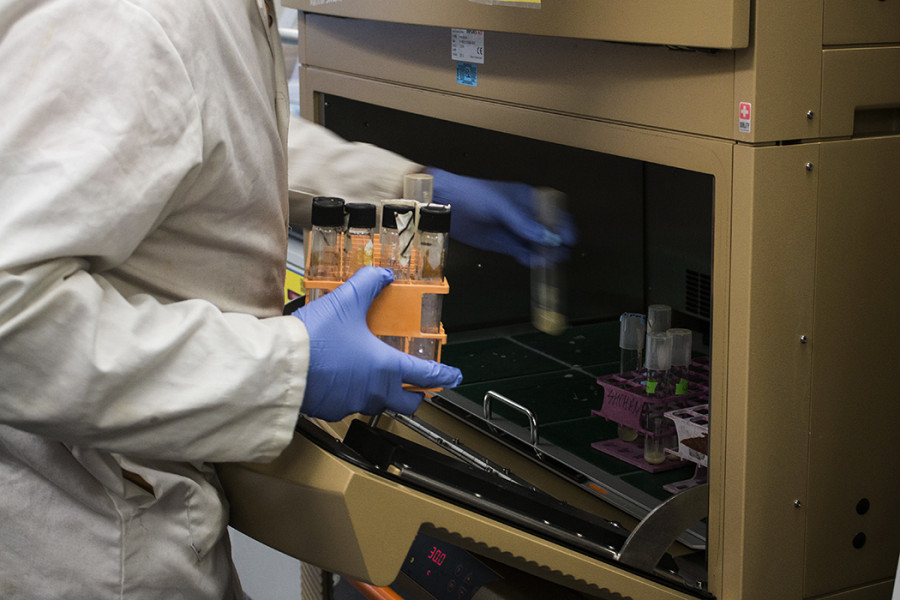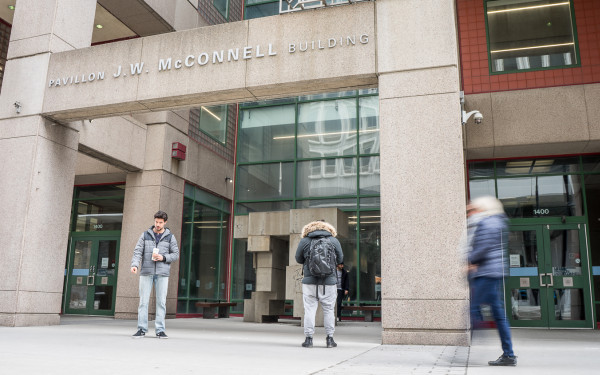Concordia’s Nano-Warriors Battle Their Way to Gold
ConU Students Set to Compete at World’s Largest Synthetic Biology Competition
In October, ten Concordia science students will be travelling to Boston with some very precious cargo: nanoparticle-coated cells. Their goal? A gold medal.
The International Genetically Engineered Machines competition is considered the largest synthetic biology competition in the world. This year, there are a total of 280 teams coming from five different continents. The competing teams are challenged to innovate uses and techniques for bioengineering.
Concordia will be building what they’ve affectionately named “Micro-Gladiators.” The attach these super tiny, almost unimaginable nanoparticles onto the outsides of cells with hopes of getting them to fight in a micro-arena—not that much different than those “Robot War” shows on television. These will, theoretically, act as their weapons and armour simultaneously.
They hope to accomplish this by coating only the outside of cells with the nanoparticles. That way the cells can still split without creating a new army of combative cells. Essentially, they want to keep it new and fun.
“Innovation is a key part of IGEM,” explained Alaa Selim, a third year biology student who minors in film studies and political science. “Even if you can’t accomplish [your idea] they’re out there so that, in the future, people who do have the technology can go ahead and be able to do these things.“
Julia Phillipp, an honours cell and molecular biology student, also stressed that IGEM aims to inspire students to cross-curricular boundaries. Students from different academic backgrounds, such as engineering and chemistry, use this competition as an opportunity to examine science as an interdisciplinary study.
“IGEM is a bridge of communication between people of various [academic] backgrounds,” Selim expanded. “People of different values, of different basis of knowledge, can come together and create something together and contribute back to the community at the same time.”
The teams come from all academic levels—from high school to graduate level–and compete in the corresponding category. Concordia’s team is composed of ten undergraduates. And they definitely have a legacy to live up to.
Building Their Way to the Podium
In 2015 and 2014, Concordia’s undergraduate team found themselves making their way onto the podium, with a bronze and a silver medal, respectively. Last year’s project, titled “Scaffococcus,” saw the team building protein scaffolds overtop probiotic cultures. Yes, the same probiotics you hear about in yogurt commercials.
The scaffold would, ideally, be able to hold another molecule onto the chosen culture.
“If you were to ingest this before, let’s say, eating peanuts and you had a peanut allergy, you would not have a reaction,” explained Phillipp. “The idea was basically to be able to use probiotics to prevent allergic reactions.”
Like many of the projects entered into IGEM, Scaffococcus was at its first stages by the time of the competition. Phillipp specified that although the students had been able to design the scaffold, it’s all about the long term vision.

Reaching Out
Human application, such as this, is one of the key elements of IGEM’s competition format. The participants are heavily graded on what’s called “Human Practices.” Their website says that teams must, “imagine their projects in a social/environmental context, to better understand issues that might influence the design and use of their technologies.”
Farhat Zafar, another team member also studying biology, explained that the emphasis a team places on this value could be the difference between a winning and a losing project. This is why IGEM Concordia is trying to take a comprehensive look at their human practices, beginning by spreading the word.
“We really wanted to focus on trying to get younger people interested in science,” explained Zahar. She said they took some time away from the lab bench to meet with Concordia Athletics’ Sports Camp and conduct some fun experiments.
They will also be heading towards Pierrefonds Comprehensive High School in the fall to continue sharing what it’s like to study science in a post-secondary institution, which may be especially inspiring, considering the team is made up of mostly women.
Of the ten participants from Concordia, six are women. While they say this is just a fluke, they understand that this is an opportunity to show that science, technology, engineering and mathematics do not need to be male-dominated fields. According to the National Science Board, although women make up half the workforce, they only account for 29 per cent of Science and Engineering workers in the United States.
Nathalie Jreidini, who will also representing Concordia at IGEM, recalled one young camper expressing that she wanted to go into the sciences after their meet and greet.
“I’m a girl and I’m a scientist, right?” Jreidini said. With a female-led team, this young girl can see herself and think, “Oh, I can for sure do that too.”
Creating a (Very Tiny) Safety Net
There are inherent dangers in working with nanoparticles. The term nano stems from the fact that these particles, unlike your regular, old miniscule particles, range in size from one to 100 nanometres.
For perspective, think of a single strand of hair. The average width of one strand is 100 micrometres. That is equal to 100,000 nanometres. In comparison, it’s clear that nanoparticles are absolutely tiny, which means that they are harder to control.
“The thing is, because nanoparticles are so tiny […] they behave differently than the same substance but in a larger size,” continued Zahar. “One of the reasons they behave differently is because they are so much easier to accidentally inhale. When they [touch] your skin, they can cross the skin barrier instead of just staying [on the surface.]”
Because the mass use of nanoparticles is quite new in the world of science, with the first industrial production only beginning in the late 20th century, the risks are still quite unknown. The team members discovered that their novelty means that in Quebec, there are little-to-no regulations on how to handle them.
Their solution? Write an extensive Standard Operating Protocol.
“The SOP has every single procedure when it comes to nanoparticle synthesis that we perform in the lab,” Selim described. “Any time that we’re doing nanoparticle synthesis, it would mention the chemical, the hazards, the safety data sheet […] On top of that, it has the protocol—the steps—and what safety precaution you should be taking.”
For example, it describes where each step should be taking place, whether on the bench, in a fume hood or a biosafety cabinet, and what protective gear they should have on, such as lab coats, gloves and goggles.
“We decided to just have everything in there so that no one has to go around looking for safety data sheets,” said Zahar.
The team also placed a lot of emphasis of making sure that the handling of nanoparticles is not only safe for them, but also safe for the environment. The outcome of their partnership with Environmental Health and Safety at Concordia helped them secure $10,000 in funding from the university’s Sustainability Action Fund.
At the end of the day, the team reaffirmed that this project is about showing what a group of undergraduate students can accomplish.
“When we go to the [competition] we want to be able to showcase our project and say, ‘We did this,’” said Selim. “I want people to look at our project and be like, ‘This is fucking amazing.’”


_600_832_s.png)

_600_375_90_s_c1.jpg)


